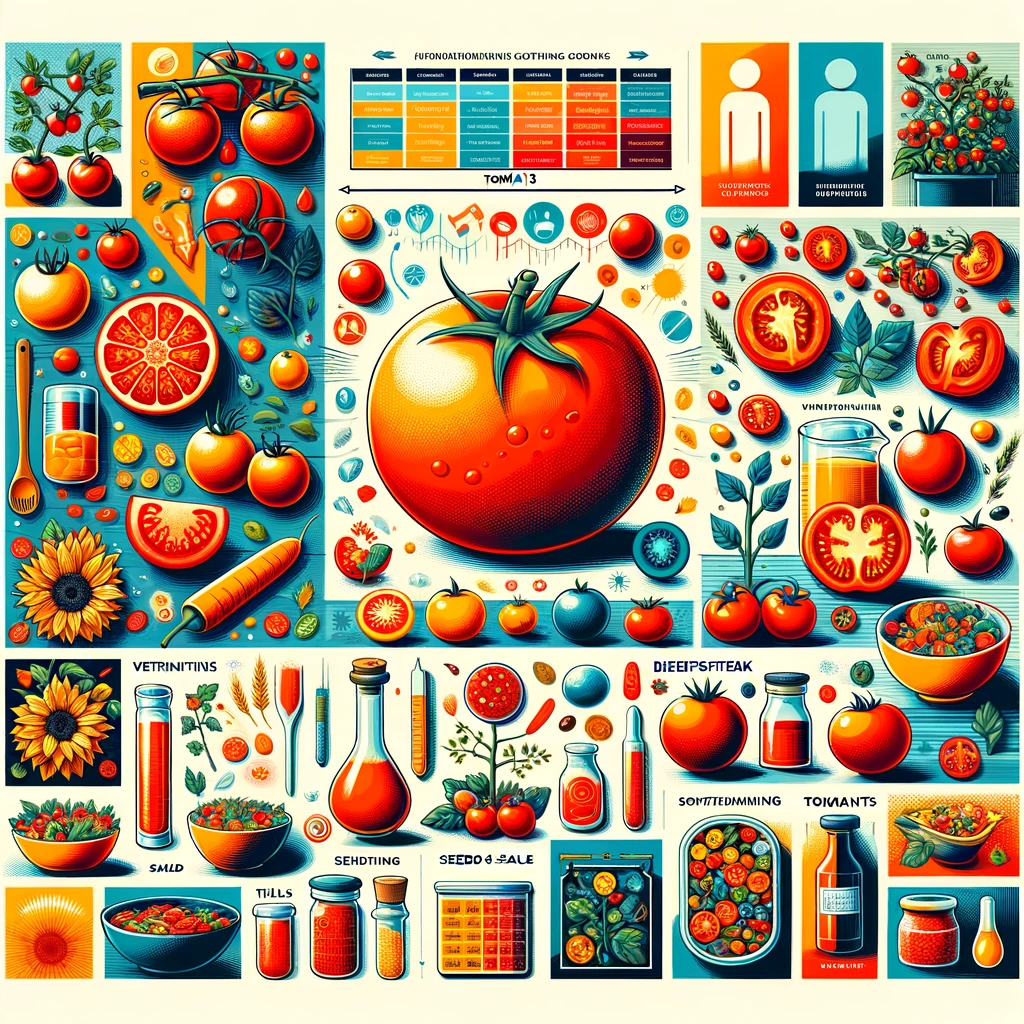Tomatoes have become an integral part of cuisines around the world, but their journey to our plates is a fascinating one. From their origins in South America to their status as one of the most widely used ingredients in modern cooking, tomatoes have a rich history. In this article, we will take a deep dive into the captivating story of tomatoes, exploring their evolution, spread, and the important role they play in culinary culture today.
The Ancient Origins of Tomatoes
1.1 The Birthplace of Tomatoes
Tomatoes are believed to have originated in the region that is now known as Peru and Ecuador. The wild ancestors of tomatoes, called “cherry tomatoes,” were first cultivated by the indigenous peoples of this area over 2,000 years ago. These tiny, sweet fruits were nothing like the large, red tomatoes we know today.
1.2 Early Domestication and Spread
The indigenous people of South America cultivated tomatoes for thousands of years before the arrival of Europeans. When Spanish explorers like Hernán Cortés and Christopher Columbus encountered tomatoes in the 15th and 16th centuries, they introduced them to Europe. However, tomatoes initially faced skepticism and even fear in Europe due to their resemblance to toxic plants.
Tomatoes in Europe: The Evolution Continues
2.1 Tomato’s Rocky Start in Europe
Tomatoes were initially met with resistance in Europe. Many believed they were poisonous and called them “wolf peaches.” It was only in the 18th century that tomatoes began to gain acceptance as an edible fruit.
2.2 The Italian Connection
Italy played a pivotal role in the acceptance of tomatoes in Europe. The Italians embraced tomatoes and incorporated them into their cuisine, giving birth to iconic dishes like pizza and pasta with tomato sauce. This culinary innovation forever changed the perception of tomatoes.
The Global Tomato Revolution
3.1 Tomatoes in North America
Tomatoes made their way to North America through Spanish colonization. They quickly became a staple in the diets of Native Americans and European settlers. Varieties like the “Rutgers” tomato gained popularity in the United States in the 1920s.
3.2 Tomatoes in Asia and Beyond
Tomatoes continued their global journey, spreading to Asia and other parts of the world. They adapted to different cuisines and became essential ingredients in diverse dishes, from Indian curries to Mexican salsas.
Modern Tomatoes: A Culinary Cornerstone
4.1 Tomatoes in Contemporary Cooking
Today, tomatoes are celebrated for their versatility and nutritional value. They are used in salads, soups, sauces, and as a base for countless dishes. Their vibrant red color, tangy flavor, and health benefits make them an indispensable part of modern cuisine.
4.2 Tomato Varieties
Tomatoes come in various shapes, sizes, and colors. From the classic beefsteak tomato to cherry, Roma, and heirloom varieties, each type brings its unique flavor and texture to the table.
The Future of Tomatoes
5.1 Challenges and Innovations
While tomatoes have come a long way, they face challenges in modern agriculture, such as pests and climate change. Researchers are constantly working on developing resilient tomato varieties and sustainable farming practices.
5.2 Tomatoes Beyond the Plate
Tomatoes have applications beyond just culinary delights. They are used in cosmetics for their antioxidant properties and in pharmaceuticals for their potential health benefits.
Conclusion
The history of tomatoes is a remarkable journey from the mountains of South America to kitchens around the globe. From their humble beginnings as wild berries to their status as a culinary superstar, tomatoes have evolved and adapted to become a fundamental ingredient in cuisines worldwide. Their story is a testament to the power of exploration, innovation, and cultural exchange, reminding us that the ingredients we take for granted today have a rich and fascinating history. So, the next time you enjoy a juicy slice of tomato on your sandwich or a savory tomato sauce on your pasta, remember the incredible journey these pioneering ingredients have made to your plate.
